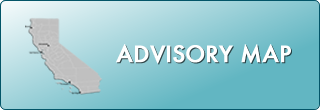OEHHA Issues 100th Fish Advisory: Guidelines for Legg Lake in LA County Provide Safe Eating Advice for Four Species of Fish
FOR IMMEDIATE RELEASE:
SAM DELSON
(916) 324-0955 (O)
(916) 764-0955 (C)
SACRAMENTO – A new state fish advisory issued today provides safe eating advice for black bass species, carp, Channel Catfish, and sunfish species from Legg Lake in Los Angeles County.
The Legg Lake recommendations are the 100th fish advisory that OEHHA has developed to provide health-based fish consumption advice for places where people catch and eat fish in California, including lakes, rivers, bays, reservoirs, and the California coast.
The Legg Lake complex is made up of three connected water bodies: North Lake, Center Lake, and Legg Lake. These three water bodies are referred to collectively as “Legg Lake.” Because fish can move freely between the water bodies, the advisory applies to all three lakes.
The California Environmental Protection Agency’s Office of Environmental Health Hazard Assessment (OEHHA) developed the recommendations based on the levels of mercury and polychlorinated biphenyls (PCBs) found in fish caught from Legg Lake.
“Many fish have nutrients that may reduce the risk of heart disease and are an excellent source of protein,” said Dr. Lauren Zeise, director of OEHHA. “By following our guidelines for fish caught at Legg Lake, people can safely eat fish low in chemical contaminants and enjoy the well-known health benefits of fish consumption.”
Legg Lake is located in the Whittier Narrows Recreation Area in the city of South El Monte in Los Angeles County, approximately 14 miles east of Los Angeles.
When consuming fish from Legg Lake, all individuals may safely eat a maximum of seven servings per week of sunfish species or five servings per week of Channel Catfish. Women ages 18-45 and children ages 1-17 may safely eat a maximum of one serving per week of black bass species or one serving per week of carp. Women ages 46 and older and men ages 18 and older may safely eat a maximum of three servings per week of black bass species or one serving per week of carp.
One serving is an eight-ounce fish fillet, measured prior to cooking, which is roughly the size and thickness of your hand. Children should be given smaller servings.
For fish species found in Legg Lake that are not included in this advisory, OEHHA recommends following the statewide advisory for eating fish from California’s lakes and reservoirs without site-specific advice.
Mercury is a naturally occurring metal that is released into the environment from mining and burning coal. It accumulates in fish in the form of methylmercury, which can damage the brain and nervous system, especially in developing children and fetuses. Because of this, OEHHA provides a separate set of recommendations specifically for children up to age 17 and women of childbearing age (18-45 years).
PCBs are a group of industrial chemicals. At high levels of exposure, they can cause health problems, including cancer. Although they were banned in the United States in the late 1970s, PCBs persist in the environment for many years and are still found in the environment from spills, leaks or improper disposal. PCBs accumulate in the skin, fat, and some internal organs of fish. In order to reduce exposure from PCB contaminated fish, OEHHA recommends eating only the skinless fillet (meat) portion of the fish.
Eating fish in amounts slightly greater than the advisory’s recommendations is not likely to cause health problems if it is done occasionally, such as eating fish caught during an annual vacation.
The health advisory and eating advice for Legg Lake – as well as eating guidelines for other fish species and California bodies of water – are available on OEHHA’s Fish Advisories webpage: http://www.oehha.ca.gov/fish/advisories. Poster versions of fish consumption advice are also available in both English and Spanish on the individual advisory pages.
OEHHA is the primary state entity for the assessment of risks posed by chemical contaminants in the environment. Its mission is to protect and enhance public health and the environment by scientific evaluation of risks posed by hazardous substances.
###
Downloads
- Apr 12, 2018


